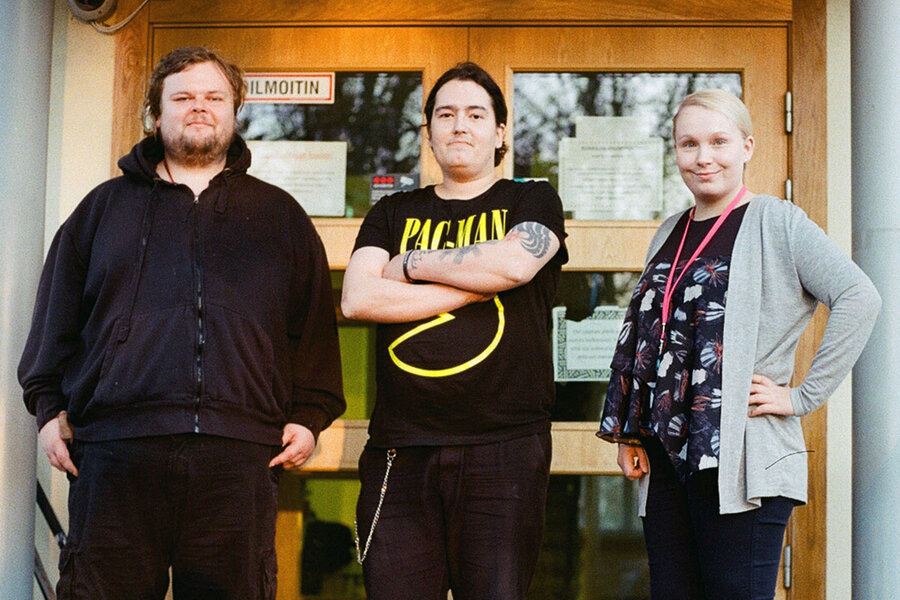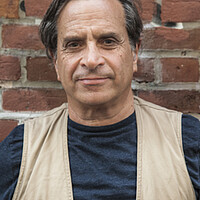Finland's homeless crisis nearly solved. How? By giving homes to all who need.
Loading...
| Helsinki, Finland
As anyone who has visited Europe recently can attest, the scourge of homelessness has reached epidemic proportions.
The only exception to the trend is Finland, according to FEANTSA, the European Federation of National Organizations Working with the Homeless. There, homelessness is, remarkably, on the decline.
Per the latest statistics, the number of homeless people in Finland has declined from a high of 18,000 30 years ago, to approximately 7,000: the latter figure includes some 5,000 persons who are temporarily lodging with friends or relatives. In short, the problem has basically been solved.
At the core of this was a move away from the so-called “staircase model,” whereby a homeless person moved from one social rehabilitation level to another, with an apartment waiting for him or her at the highest step. Instead, Finland opted to give housing to the homeless from the start, nationwide, so as to allow them a stable environment to stabilize their lives.
“Basically, we decided that we wanted to end homelessness, rather than manage it,” says Juha Kaakinen, CEO of the Y-Foundation, which helps provide 16,500 low-cost apartments for the homeless.
‘Housing is a prerequisite’
To be sure, one of the reasons why Finland has made such strides in resolving its homelessness problem is because successive Finnish governments have made it a national priority. The elimination of homelessness first appeared in the Helsinki government’s program in 1987. Since then virtually every government has devoted significant resources toward this end.
Around 10 years ago, however, observers noticed that although homelessness in general was declining, long-term homelessness was not. A new approach to the problem was called for, along with a new philosophy.
The optimal solution, a group of four experts appointed by the Ministry of the Environment found, was Housing First. “Solving social and health problems is not a prerequisite for arranging housing,” they observed. “Instead, housing is a prerequisite that will also enable solving a homeless person’s other problems.”
The concept behind the new approach was not original; it was already in selective use in the US as part of the Pathways Model pioneered by Dr. Sam Tsemberis in the 1990s to help former psychiatric patients. What was different, and historic, about the Finnish Housing First model was a willingness to enact the model on a nationwide basis.
“We understood, firstly, that if we wanted to eradicate homelessness we had to work in a completely different way,” says Mr. Kaakinen, who acted as secretary for the Finnish experts. “At the same time right from the beginning there was a national consensus that the problem had reached a crisis point. ... We decided as a nation to do something about this.”
Changing course
As a result, in 2008 the Finnish National Program to reduce long-term homelessness was drafted and put into place. Helsinki and nine other Finnish cities committed to the program, with the Ministry of the Environment coordinating its implementation, and local governments and nongovernmental organizations, including the Y-Foundation, joining the team.
One of those goals was to cut the number of long-term homeless in half by producing 1,250 new homes, including supported housing units for tenants with their own leases, and around-the-clock presence of trained caring staff for residents who needed help.
At the same time, the extant network of homeless shelters was phased out. This also involved phasing out the “old way” of thinking about homelessness. “There was some work to be done on attitudes,” concedes Kaakinen. “Some of the people in the NGOs found the idea of unconditional housing hard to accept.” Also some staff had difficulty with not forcing tenants with alcohol or drug problems to go cold turkey before they were given housing.
However the effectiveness of the new model spoke for itself. Across Finland, long-term homelessness fell by 1,345 people, or 35 percent between 2008 and 2015. In some cities it was halved.
“For a long time we dealt with homelessness in the traditional way,” says Sanna Vesikansa, the deputy mayor of Helsinki. “But it’s difficult for people to work on their problems if always in the morning they have to go out in the streets and then come back at night.”
‘A roof over my head no matter what’
The success of the Finnish approach is evident on a visit to Rukkila, a supported housing unit on the outskirts of Helsinki that was taken over by the Y-Foundation in 2011.
Currently 20 people live at Rukkila. Each resident has his own fully equipped, modern apartment. There is also a large communal area where residents can cook meals, watch TV, or just hang out. “One of the things we offer here, besides personal support, is the opportunity to form a community. I think that’s important,” says Emmi Vuorela, who works as project coordinator at Rukkila.
“Some of them have substance abuse problems, or personal issues, and we try to help them with that,” says Ms. Vuorela, who has been working at Rukkila for three years. “Above all, homeless people need stability and content in their lives.”
Residents are allowed to have guests during the day. However, they need to get permission for an overnight guest. “Of course we do hope that residents will think about the guests they are bringing into the community,” adds Vuorela, “especially if they are intoxicated, but ultimately we trust them to decide what is best for them and the community themselves.”
Other than that, there are few if any rules. If residents have drinking or other substance abuse issues, they are encouraged – but not forced – to deal with them. Hopefully, with the aid of the staff, they will rehabilitate themselves.
One such resident, Fernando, who has lived at Rukkila for three years, is in the process of doing just that. “I am dealing with my problems here,” he said. “In the meantime, it’s nice to know that whatever happens I have a roof over my head no matter what.” Eventually Fernando plans on moving out and getting a job, as some of his former neighbors have done.
“There’s nothing better than helping someone move forward with their lives,” says Vuorela. “Here at Rukkila we try to provide a supportive environment in which they can do just that.”
“However we do not push them.” In the meantime, the army of homeless who used to fill Helsinki’s homeless shelters has been disbanded.
Paying for itself?
As far as the not inconsiderable cost of producing the 3,500 units created between 2008 and 2015 – estimated at just under $382 million – Ms. Vesikansa declares that “the program pays for itself.” As evidence, she points to a case study undertaken by the Tampere University of Technology in 2011. It showed society saved $18,500 per homeless person per year who had received a rental apartment with support, due to the medical and emergency services no longer needed to assist and respond to them. “If anything the cost savings today is higher,” she says.
“That doesn’t cover the contribution to the economy [from] residents who moved on from supported housing and got jobs,” she adds.
“Of course the fact that the program pays for itself is important,” agrees Kaakinen, “but beyond that, from a moral point of view, as a society which cares for all of its citizens, we didn’t think we see an alternative. This, we felt, was the way to go forward. And we did.”
Finland's success has spurred other countries, particularly Britain – where the problem has also reached crisis proportions – to adopt their own plans modeled on the Finnish Housing First plan. Kaakinen feels that can work, but only where there is the kind of cross-the-board commitment to resolving the problem that Finland has shown.
“If other countries are inspired by our example, that’s all for the better. There is no quick fix to all situations however, we found. A solid base can provide the foundation upon which to improve the lot of the homeless, and ultimately resolve this issue.”








